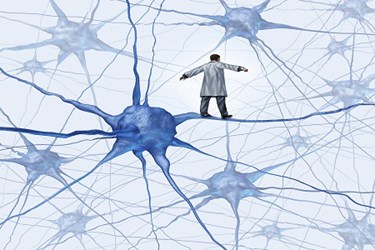Researchers Uncover Key Pathway Contributing To Alzheimer's Disease
By C. Rajan, contributing writer

Researchers at Mayo Clinic, Jacksonville, have identified a defect in a key cell-signaling pathway which might be responsible for the development of Alzheimer's disease. They found that this defect caused overproduction of toxic protein in the brains of Alzheimer's disease patients and loss of communication between neurons, which are both processes known to contribute to the development of the disease.
Dr. Guojun Bu, a neuroscientist at Mayo Clinic and the study's lead investigator said, "This defect is likely not the sole contributor to development of Alzheimer's disease, but our findings suggest it is very important, and could be therapeutically targeted to possibly prevent Alzheimer's or treat early disease."
According to Dr. Bu, it may be possible to target this specific defect with drugs that "may rejuvenate or rescue this pathway,” as a possible cure for this condition.
The cell-signaling pathway, called Wnt signaling, plays a key role in cell survival, embryonic development, and synaptic activity. Over-activation of this pathway is often associated with cancer growth. Previous research on Wnt has focused on cancer and other diseases involving overactive Wnt signaling. However, Dr. Bu's team is one of the first to demonstrate the link between suppression of Wnt signaling and Alzheimer's disease. The researchers found that this defect suppressed Wnt signaling in Alzheimer's in mice models.
Alzheimer's disease is an increasingly common neurological condition among the elderly which results in cognitive decline, impaired performance of daily activities, and behavioral disturbances. An estimated six million people in the U.S. suffer from Alzheimer’s disease, and by 2050, approximately 16 million Americans will have this condition.
A toxic buildup of amyloid protein in the brain is known to be involved in the development of Alzheimer's disease. However until now, it is not known how or why this disease develops.
"Our finding makes sense, because researchers have long known that patients with cancer are at reduced risk of developing Alzheimer's disease, and vice versa," Dr. Bu says. "What wasn't known is that Wnt signaling was involved in that dichotomy."
The researchers also discovered that low levels of the low-density lipoprotein receptor-related protein 6 (LRP6) leads to a toxic buildup of amyloid and impairs the communication between the neurons. Mice without LRP6 demonstrated impaired Wnt signaling, cognitive impairment, and excess amyloid buildup.
To confirm their findings, the team examined postmortem brain tissue from Alzheimer's patients and found deficient levels of LRP6 as well as severely compromised Wnt signaling.
"Identifying small molecule compounds to restore LRP6 and the Wnt pathway, without inducing side effects, may help prevent or treat Alzheimer's disease," Dr. Bu says. "This is a really exciting new strategy—a new and fresh approach."
The study is published online in the journal Neuron.
